The Salon Privé reveal of the Electrogenic Aston Martin DB6 commissioned by UK comedian Jimmy Carr prompted a furious response from some online. To cut through the keyboard warriors’ anger, we sat down with Steve Drummond, the company’s CEO, to discuss the project.
But first to the 1967 car itself; its electric drivetrain provides 150kW (equivalent to 200bhp), and it can hit 0-60mph in 6.5 seconds, topping out at 90mph, although a more powerful 210kW/280bhp motor is available for the DB6. It has 150 miles of range, and is compatible with 100kW rapid charging. Most importantly, the conversion is entirely reversible.

“It came about because we built an electric DeLorean – we were recommended by a very satisfied customer,” says Steve. “Jimmy already owned the Aston, and he gave us a blank canvas – he told us to use our judgement and do what we’d do if the car was ours.”
Electrogenic offers a range of options for use and performance, and Carr chose the current specification. “It’s sprightly in the mid-range, so if you’re accelerating from 30mph to 60mph it feels lively and nimble,” says Steve. “It doesn’t have a huge top end and it’s not ridiculously powerful – that was his choice.”
When it comes to defining performance parameters, Steve considers the appropriate amount of power carefully. “Our ethos is to make the car a better version of itself. It’s non-invasive – nothing cut, drilled or welded; we unbolt parts and bolt in new ones. We don’t overwhelm the car or try to make it something it never was,” he explains. “Broadly, we aim for stronger mid-range acceleration without gearchanges, which improves the 0-60mph. Most of our cars end up with about a 1.2 power-to-weight ratio compared to the original.”
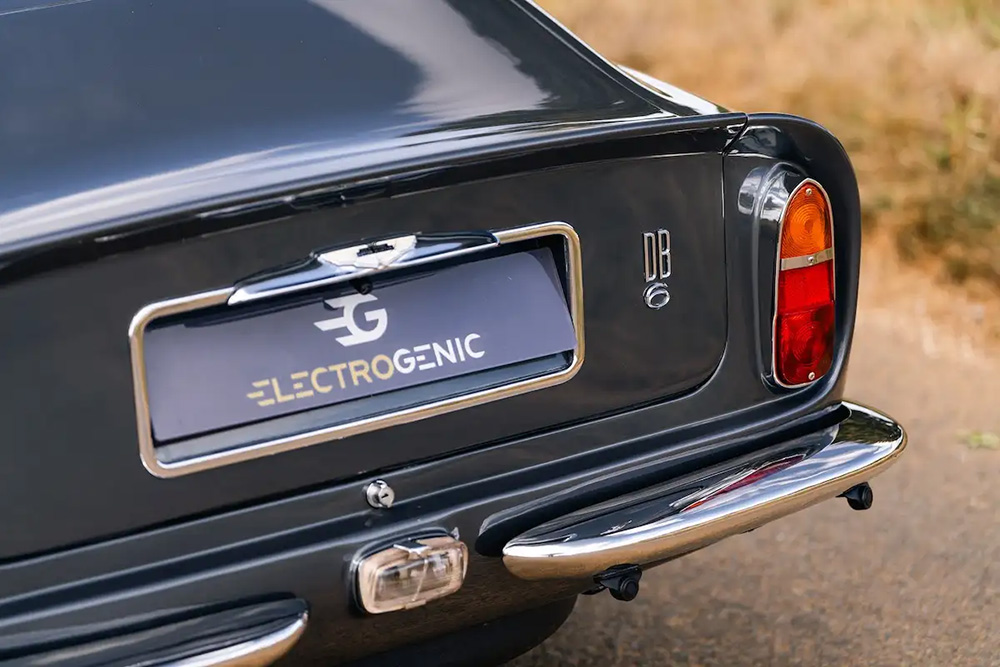
This means that although the suspension is upgraded, it’s not made stiffer – quite the opposite. “We pay careful attention to the weight and the balance of the car, so we don’t need to change the suspension,” Steve says. “The idea isn’t to overwhelm the car or turn it into something it never was, or make it a modern car – it’s about balance and drivability, and we keep the feel appropriate to the era.”
This philosophy very much depends on the base car – for Electrogenic’s DeLorean conversion, the firm felt it could push the performance higher, halving the 0-60mph. “With the DeLorean, for example, we managed to halve the 0-60mph time, and the car was begging for it really. It still had its original Lotus suspension, which had been designed for a much more powerful engine than the underwhelming unit it ended up with,” Steve explains. “What you get in the end is acceleration that feels like first and second gear stretched out across the whole range up to 60-70mph. Combine that surge with not having to change gear, and the 0-60mph usually improves. If you look at most of our cars and compare how they were originally with how they are now, you tend to find the same story.”
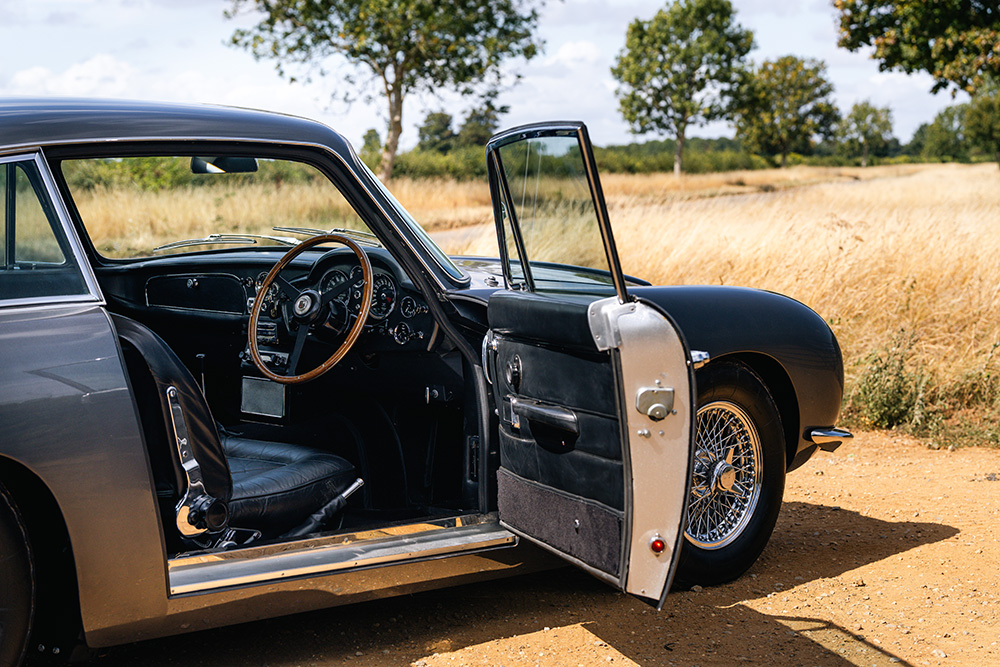
The engineering process begins by bringing the donor car in and scanning it as it is, paying close attention to the driveline geometry. “We want to know exactly where the driveshafts, propshafts, wheels and suspension sit in relation to one another. We scan the whole thing in its proper loaded state to see how the original design intended it to work,” Steve explains. “Then we remove the unwanted bits – usually the engine, gearbox, fuel tank and exhaust. We scan again, which gives us both a record of the original set-up and a blank canvas to work with.”
The next stage is to put together the design brief – the performance aims and the price point, which in turn dictates the type of motor, gearbox ratios and operating voltage. Once the motor is chosen, Electrogenic specifies the battery system to suit. “The underlying battery modules come in set sizes and voltages, and we build up a suitable kilowatt-hour pack from standard automotive-industry units,” says Steve. “Alongside that we consider weight and weight balance.”

This is particularly important with performance cars, Steve adds. “Take the MX-5 kit we offer – it has exactly the same weight balance as the original, only about 30kg heavier and with a power-to-weight ratio about 1.2 times greater,” he says. “In other cases we’ll alter things deliberately. With the E-type, for example, we add weight to the rear for traction and reduce it at the front to lighten the steering, which also helps the car drift more predictably rather than spinning.”
In most cases Electrogenic keeps the overall weight within 50kg-60kg of the original. “Once the motor and batteries are positioned in our scan envelope, the design process begins with the big items – mounting the motor, fitting the batteries, integrating the inverter and placing the electronics,” Steve says. “For cars that are new to us, we fabricate the necessary metalwork and trial fit everything. Our highly skilled mechanics then step in to fine-tune the layout.”
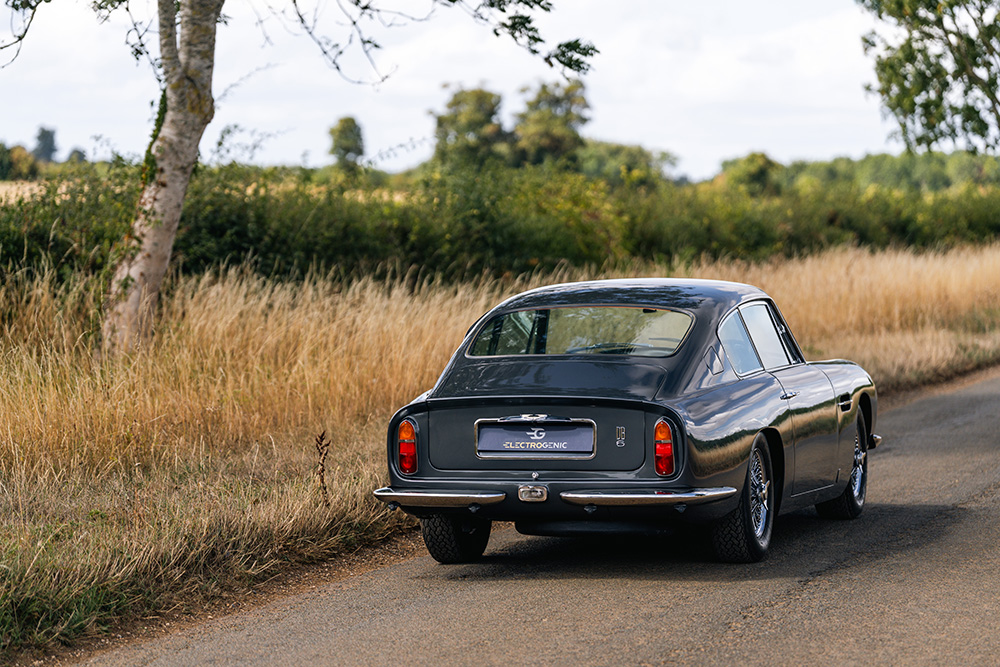
A key challenge is cooling – the batteries, inverter, motor and charger all need dedicated cooling circuits, which means running a significant number of pipes. “On top of that, there’s the high-voltage cabling: the available spaces are where the engine and fuel tank once sat, with the charging port usually at the rear – that requires long cable runs throughout the car,” Steve says.
“Balancing design work in CAD with practical adjustments in the workshop is essential. Mechanics often determine that for maintenance access or packaging efficiency, pipe and cable routes need shifting. Those changes are then fed back into CAD, after which we produce the final mounts, brackets, engine supports and battery boxes.”

Beyond the core drivetrain, there are numerous peripherals to integrate: brake vacuum pumps and reservoirs, hydraulic power steering if fitted to the original car, as well as heating and air-conditioning systems. “Each requires careful planning, design and also secure mounting points – often designed onto the battery boxes, where studs provide neat, reliable fixing,” Steve explains.
He says it’s intricate work, especially in small cars such as the MX-5, where space under the bonnet is tight. After the redesign is finalised and the parts are built, everything is installed, wired and plumbed. “Commissioning then begins, which can involve sorting out messy 12-volt wiring on older cars,” he says. “Once the systems are checked and the car is running, we fine-tune it, usually offering three drive modes: sport, eco and traffic, with strong regeneration for one-pedal driving.”
For a bespoke project, Electrogenic invites the customer to drive the car during testing, and adjust the settings to their preference. Then there’s a shakedown testing session of a few hundred miles to catch and fault components, and then it’s ready to hand over.
With the Electrogenic Aston Martin DB6 in particular, the batteries were split between the engine bay and the space where the fuel tank was. “The motor and reduction unit sit neatly in the transmission tunnel and are arranged so that you simply bolt on the original prop shaft.”
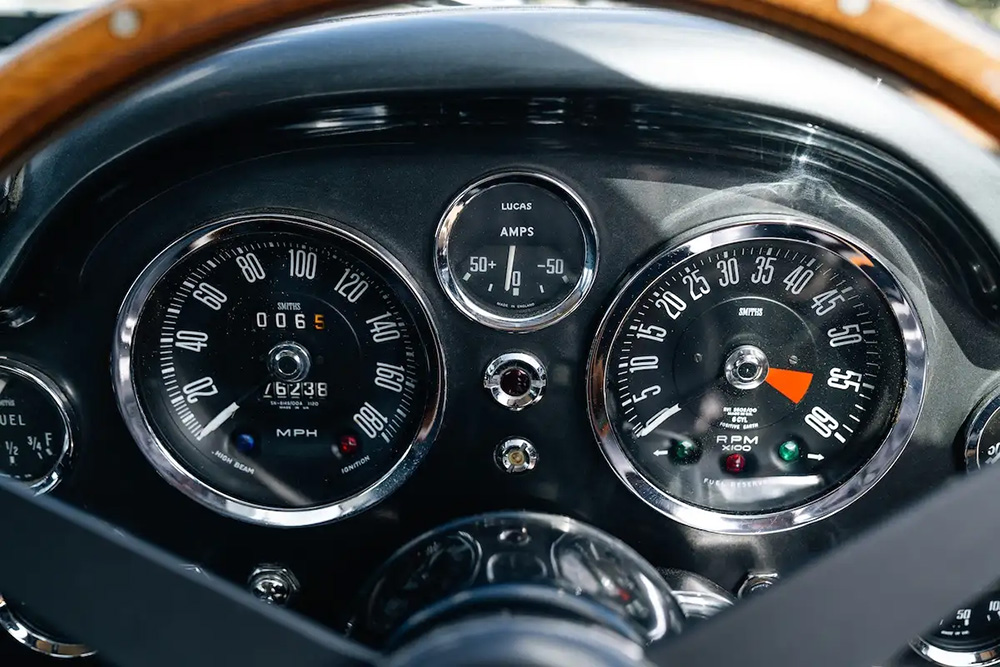
Although Carr was happy to give the team a free rein on drivetrain specification for his Electrogenic Aston Martin DB6, he wanted the interior to remain as standard as possible – something aided by the fact that the software and electronics have been developed in-house. “We’ve built over 100 cars now, and we’re the only company in the world to have produced that number using our own tech,” Steve beams. “This creates a virtuous cycle: every car we build feeds back into the technology, which in turn improves the next cars, and so on. One example is our approach to dashboards. We’ve developed a system we call the ‘BabelFish’, which we even supply to other manufacturers.”
The BabelFish has two CAN channels: one for all the mission-critical EV systems, and another that can handle anything else. “This allows us to integrate components such as Jaguar Land Rover’s beautiful drive selector, which rises elegantly from the console when the ignition is switched on,” Steve says. “Electrically, though, it’s very busy – it floods the CAN bus with unnecessary signals. Our system filters those out, taking only what’s needed while protecting the critical EV systems.”

Beyond that, the BabelFish can accept and output any digital or analogue signal, allowing it to mimic things such as starter coils or spark plugs. “This means we can calibrate it to drive all the original gauges, which most customers prefer to keep,” Steve says. “The instruments retain their classic look but take on new functions: the speedometer remains unchanged, the tachometer becomes a power meter with acceleration and regeneration indicated around a central point, and the fuel gauge shows battery state of charge.”
Other gauges are adapted, too. Temperature dials monitor the cooling system, oil-pressure gauges can display fault states with subtle needle positions, and additional screens can be integrated discreetly – often in the glovebox – to show EV-specific data such as charging rates. Ultimately, it all comes down to customer choice, Steve says. “Some owners want entirely new digital gauges, others prefer their originals refaced, and some opt for a mix of traditional dials and discreet screens,” he adds. “For example, one DeLorean project involved replacing part of the original cluster with a digital display, tailored to the owner’s wishes.”
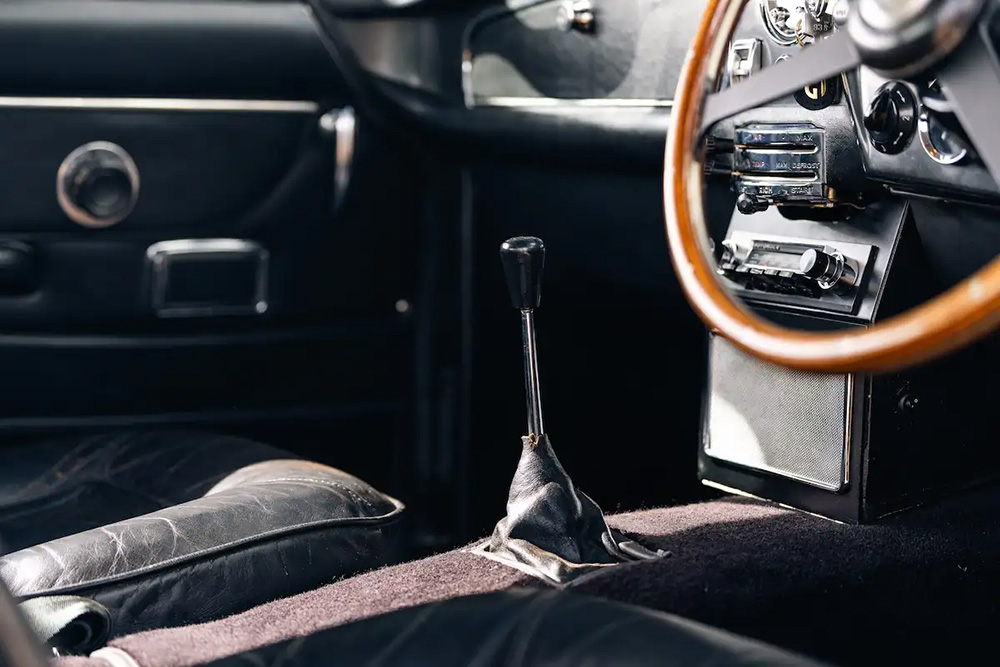
One detail Steve’s particularly proud of is the gear selector. “For the DB6 we repurposed the original gearstick for the forward, neutral, reverse selector,” he says. “It’s notched, so you have to move it sideways as well as forwards and backwards, which is a little tweak I’m proud of. The key thing about any car we make is the thought and care we put into it. Our whole team are complete car enthusiasts, so the main aim is always that it remains an amazing drive.”
While Electrogenic can upgrade a Land Rover in a week – it’s by far the company’s most popular conversion, eclipsing all the other vehicles combined – a bespoke project such as the DB6 can take nine months due to the design process and fitting.
“In terms of bespoke conversions, they make up only about ten percent of our business and revenue – we take on a small number of commissions each year for particular clients,” Steve says. “Electrogenic primarily designs and manufactures powertrains, and we started doing that for a wider range of vehicles, especially during the pandemic, when our traditional [modern car] automotive customers disappeared.
“This shift to direct-to-consumer work was necessary, and in fact, it’s been brilliant. Mostly, though, we focus on making powertrains for new cars, military applications and for our kit range for older cars. In the kit range, our partners handle installation rather than us directly.”

Steve stands behind the 150-mile range for Carr’s Electrogenic Aston Martin DB6. “We don’t use the adjusted figures that require you to knock a third off,” he smiles. “It has a 100 kilowatt CCS charge rate, so it can recharge in 45 minutes. If you wanted to drive up to Scotland, you would have to stop for a coffee along the way, but it wouldn’t be a very long coffee.”
There are currently no plans to introduce a kit for the DB6, largely because getting all the cables and pipework from front to back without cutting or drilling is extremely difficult, Steve says. “It took weeks of hand-forming ducting to route around the wheelarches, and it all needs to be steel to protect everything properly. It’s not something that can be done in a couple of weeks; it’s a much more involved project.”
Although Carr’s DB6 doesn’t have a manual gearshift, it’s something that Electrogenic has become known for. “It really depends on the car. Nobody’s desperate to retain a manual gearbox on a Land Rover, really. We do keep the transfer box, though, along with the high and low ratios, diff lock and all the other features that make it a great off-roader,” Steve says. “Whereas with something such as a Porsche 356, changing down into second, zooming around a corner and back up into third on country roads is really engaging. It’s a really enjoyable drive.”

One of Steve’s favourite projects was an MGA, which involved the installation of a brand-new Ford manual gearbox. “It was a lovely thing to drive, absolutely beautiful, perfect for a sunny day in the Cotswolds,” he says. “We’re getting more and more enquiries for manual-gearbox conversions now – the interest has grown significantly, and our technology continues to improve. We’re currently having detailed discussions with a customer about how to manage a high-power car with a manual gearbox. We are working on one at the moment. It will be revealed later this year or early next, and it will have electronic control in every manual gear.”
Steve says that one of Electrogenic’s strengths is that it can manage the motor so that it behaves like a petrol engine. “For instance, when you lift off the accelerator, the motor eases down towards idle, allowing a smooth gearchange. It feels completely natural, with no need for mental adjustment,” he says. “Because we can control motor profiles, we can essentially create an infinite number of profiles. If we know what gear you’re in, we can manage profiles for every gear and every RPM.”
Carr has yet to pick up the Electrogenic Aston Martin DB6 – he’s still on tour. “The car was already a nice everyday example – the paintwork’s immaculate, and the leather seats are nicely lived in, but good,” Steve says. “It’s just a really good car, and now it’s even better.”
More details on the Electrogenic Aston Martin DB6 can be found here.




